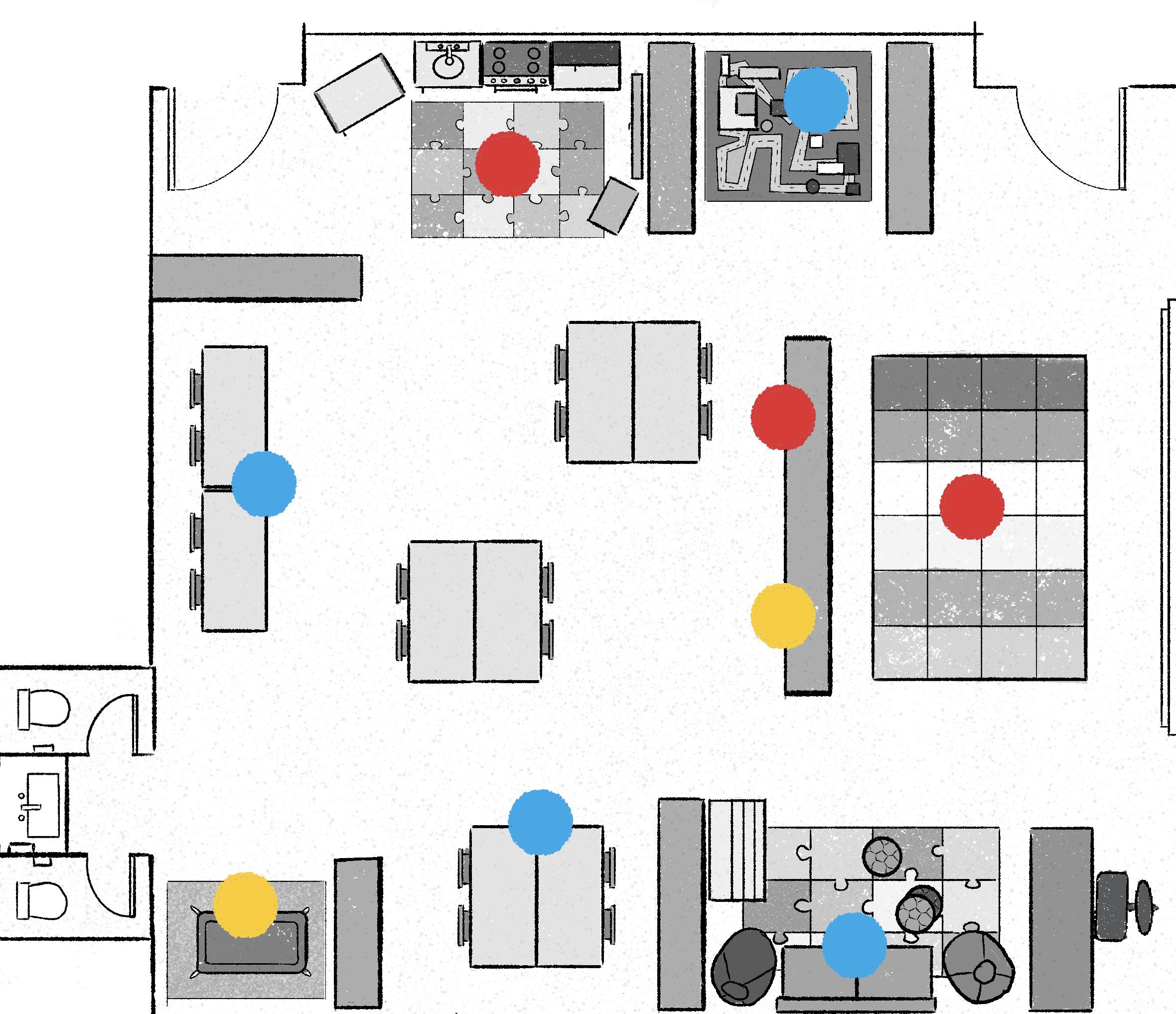




The block area offers many opportunities for learning through play. When our students construct, create, and represent their experiences with blocks, they make progress in each area of development and learning.
Language & Literacy: Students expand their vocabulary and oral language by talking about what they’ve created and they practice writing skills as they make signs for their creations.
Cognitive, Mathematics & Science: Playing with blocks gives them an opportunity to connect experiences and process information. Creating a representation of their environment is a basis for more complex abstract thinking.
Physical: Our students’ small muscles develop when they carry and carefully place blocks together to form a structure or make an intricate design. They gain large-muscle strength by using hollow blocks, and they improve hand-eye coordination when they carefully balance blocks so they will not tumble.
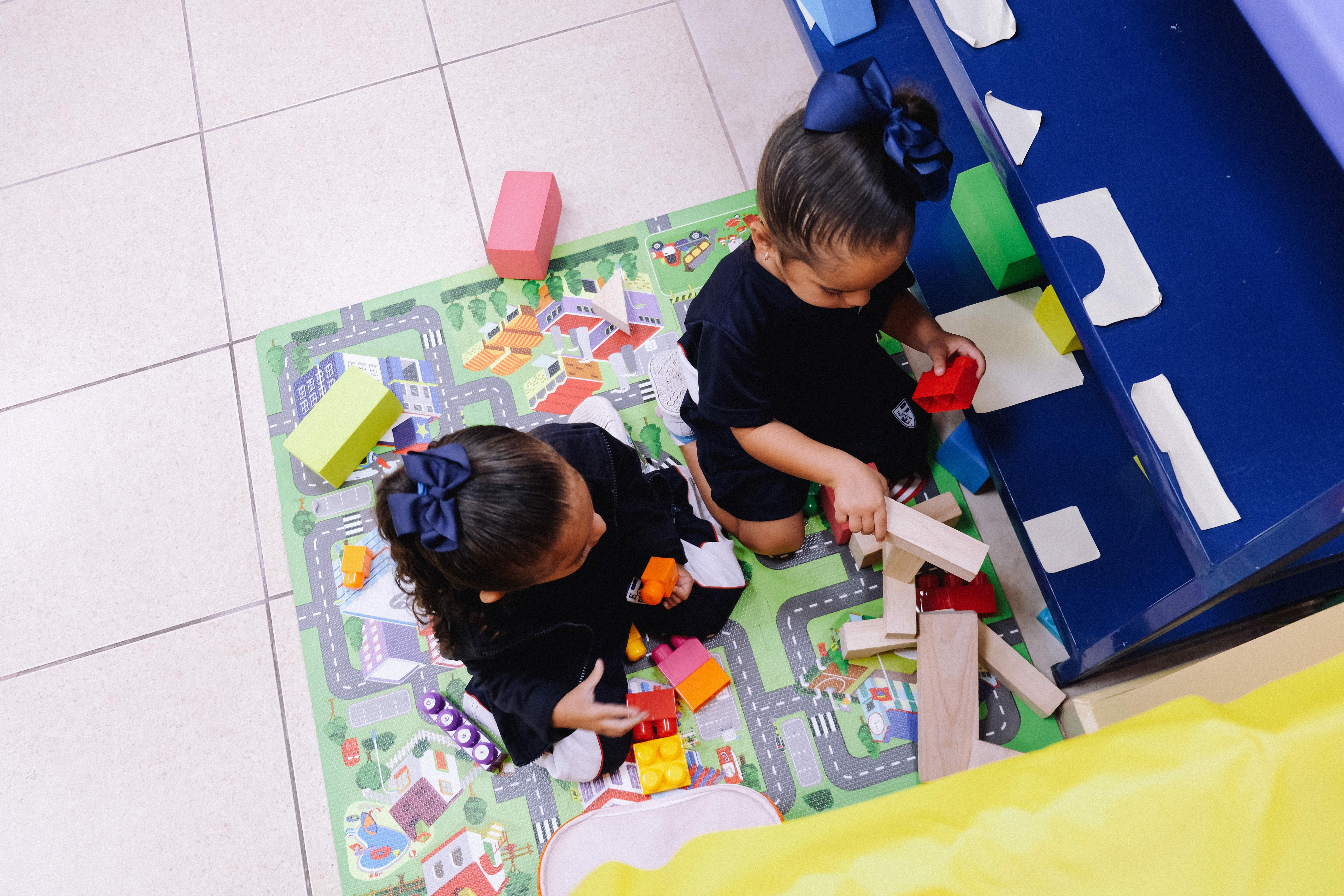


When our students engage in dramatic play, they deepen their understanding of the world as they learn and develop skills that will serve them throughout their lives.
Social-Emotional - Dramatic play builds socialemotional and cognitive skills as our students learn to "cooperate with others and engage in socially appropriate behavior". They begin to explain their ideas and thinking and work creatively with other children.
Cognitive Mathematics, Science, and Social Studies
- Our students create pictures in their minds about past experiences and the situations they imagine, as they pretend. These images are a form of abstract thinking.
Language & Literacy - To engage with others in dramatic play, our students use language to explain what they are doing and to ask and answer questions. Dramatic play promotes vocabulary and language as teachers introduce and teach our students the names of props, and ask questions.
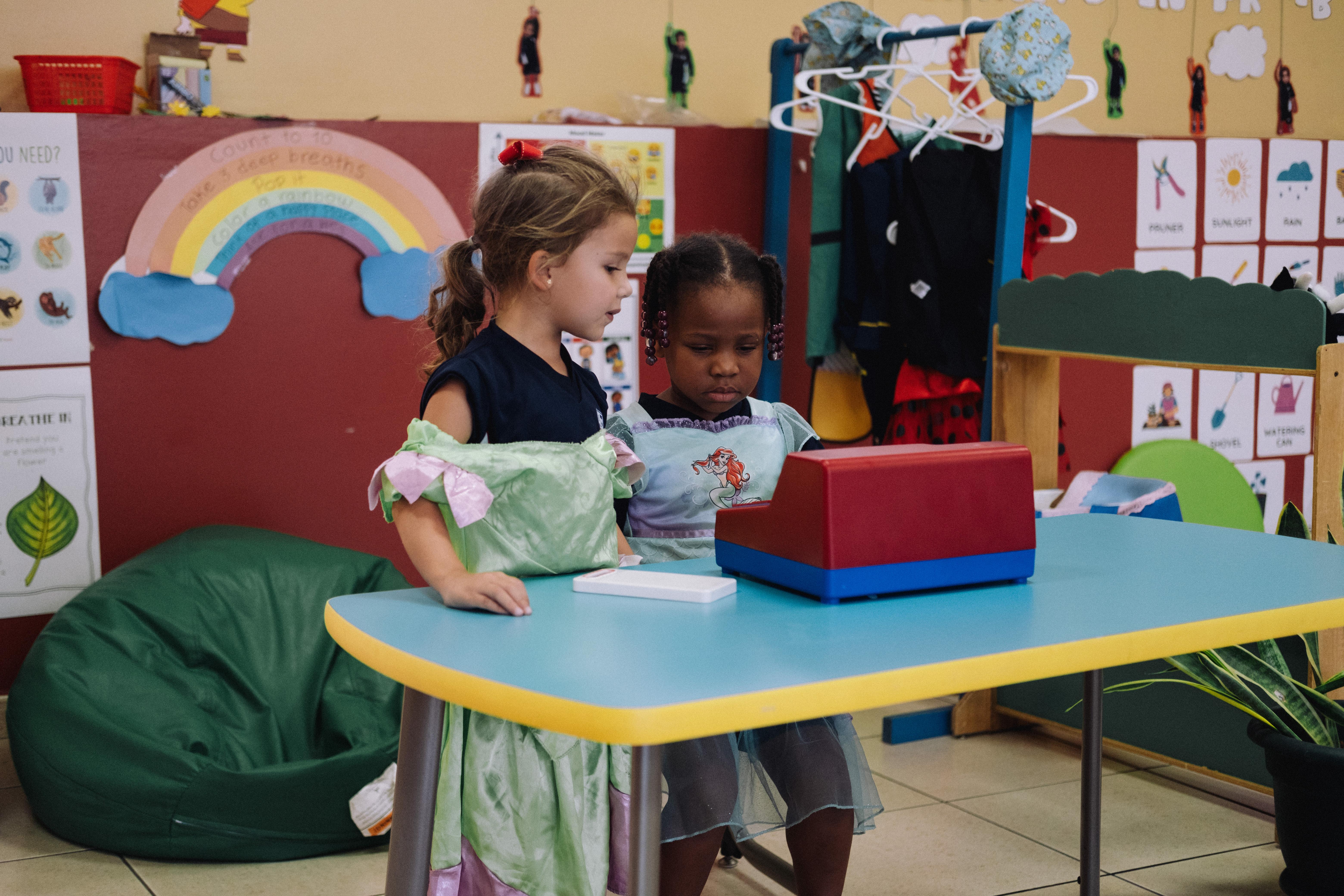


The Art area is a place where our students can create and represent their ideas in a visual form. Creative art is another language children use to express what they know and what they feel.
Social-Emotional - Art is a vehicle for our students to express their ideas and feelings. Children reflect on their thoughts and emotions through their choices of color, texture, and media.
Physical - Art helps develop fine motor skills. As our students tear paper for a collage or use scissors to cut, they refine small-muscle movements. These activities help children develop the fine-motor control they need for writing.
Cognitive and Science - As our children draw, paint and sculpt what they know, they translate their ideas and feelings into art, and they use thinking skills to plan, organize, select media, and represent their impressions.
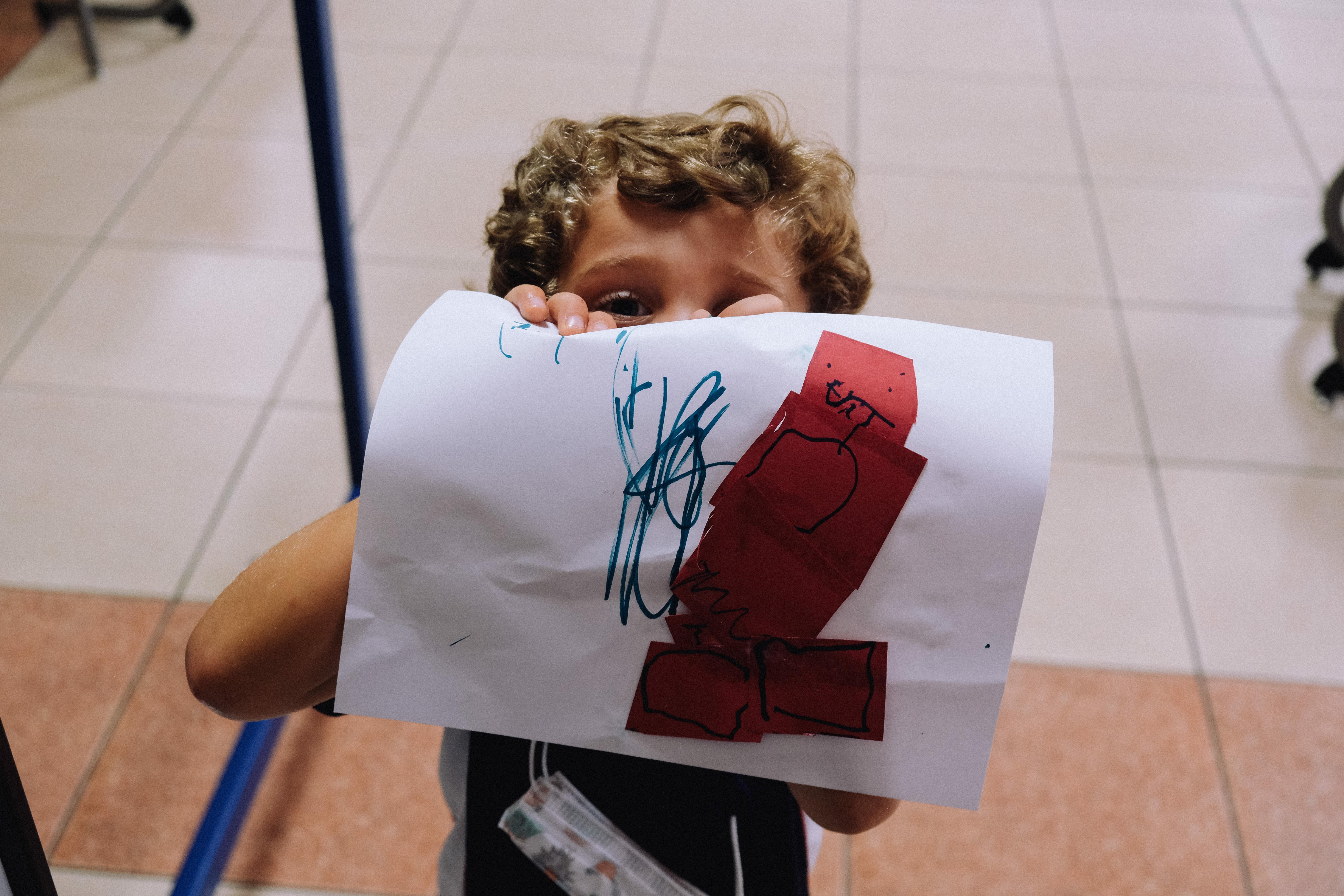



Playing with sand and water involves sensory experiences that appeal to young children. While sand and water play can delight the senses, it can also challenge our students’ minds and promote all areas of development and learning.
Cognitive, Mathematics, and Science - Sand, and water are natural companions in scientific explorations. Our students discover that, as a liquid, water can be splashed, poured, and frozen. They explore cause and effect when they observe which objects sink and which float.
Social-Emotional - Sand and water inspire our students to work together to construct a sand village, wash a doll in water, or chase a giant bubble. When children play with sand and water they often express their thoughts and feelings.
Language and Literacy - While playing with sand and water, our students expand their vocabularies. They build emerging literacy skills as they write letters in the sand or use alphabet molds.
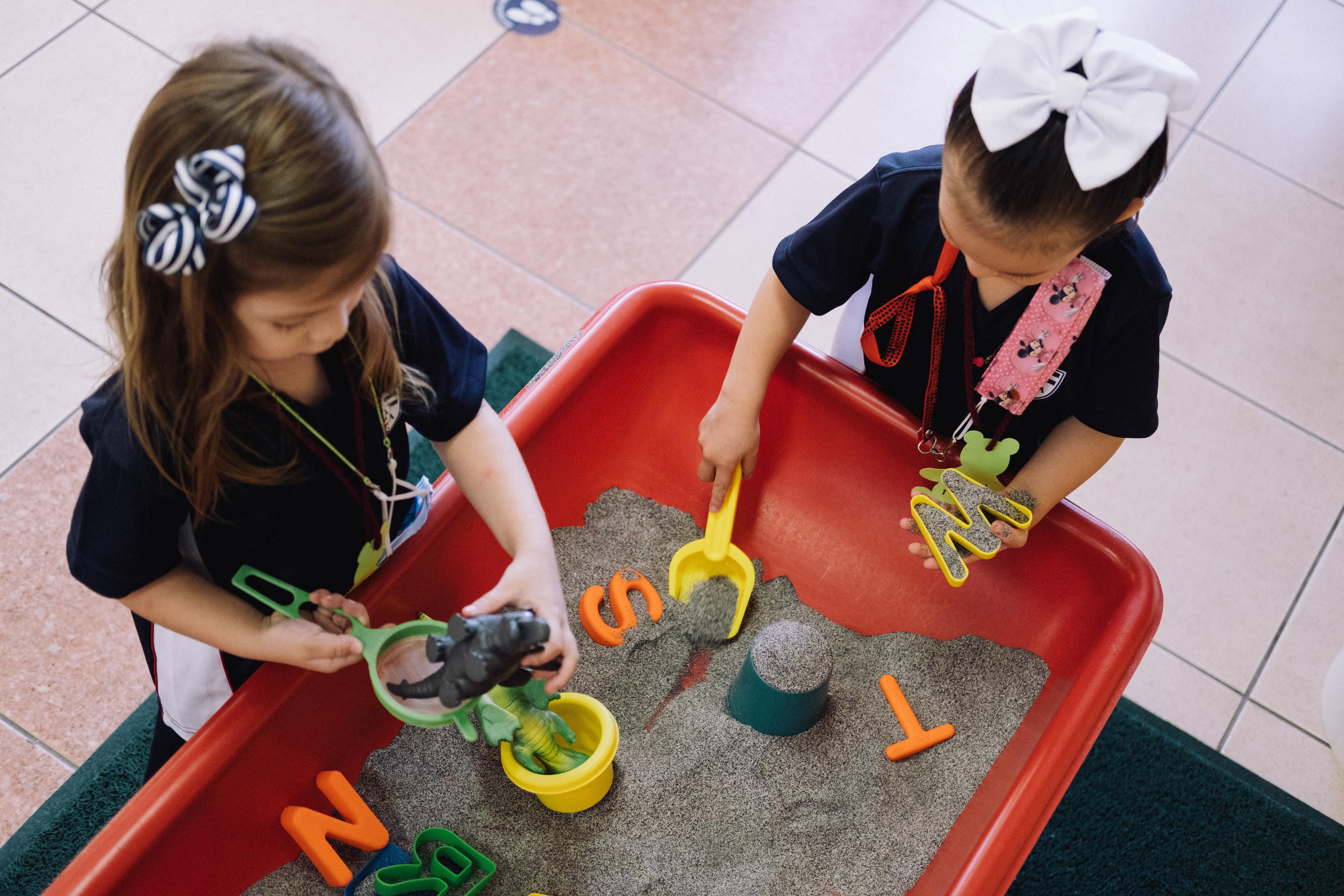

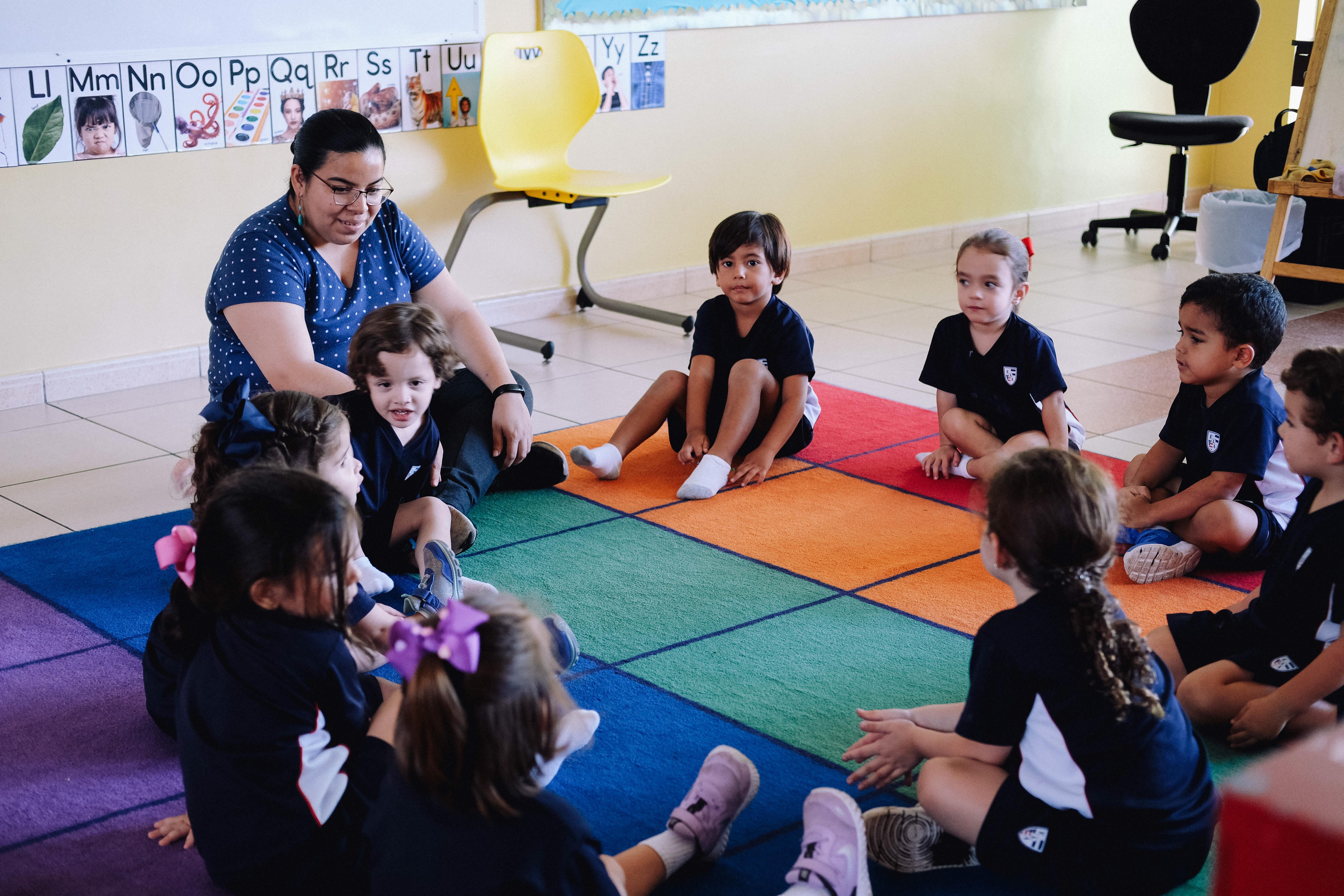

The Discovery area is a place to find the answers to many questions, as they act on objects and observe what happens. This is a place to spark our students’ curiosity by offering interesting materials.
Social-Emotional, Science, and Social Studies - Our students learn to work together as they explore, make discoveries, and solve problems as they play.
Physical - Our students develop fine-motor skills when they use eyedroppers to squeeze colored water onto wax paper or pick up dead insects with tweezers. They develop dexterity and hand-eye coordination as they turn gears, take apart a broken toy and pick up paper clips with a magnet.
Language and Literacy - When our students make discoveries, they are eager to share their excitement with others. They want to talk about their investigations, ask questions, and share experiences. They use new words to describe how things look, touch, taste, smell, and sound impressions.
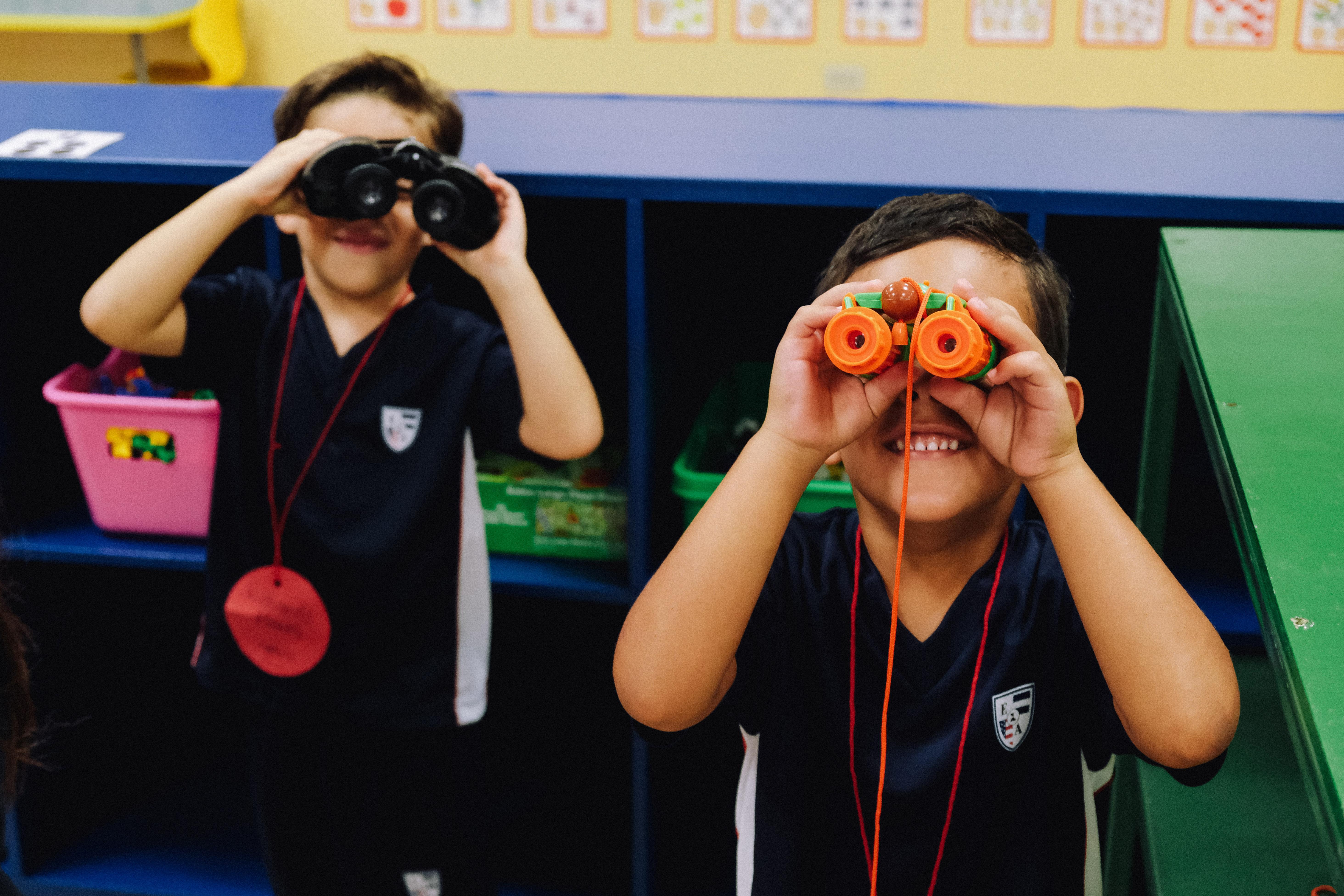


In the Library area, our students experience how enjoyable reading and exploring books are as they also develop the motivation and skills necessary for reading and writing.
Language and Literacy - All aspects of language and literacy (reading, writing, listening, and speaking) can be strengthened in the Library area. When our students hear stories, they learn new words and their comprehension grows. Our students develop phonological awareness when they hear and explore the sounds of language in books.
Social-Emotional - From books and conversations, our students learn about people who are similar to and different from them. They develop empathy for those who face challenges.



This space is designed to have group meetings, where our students feel welcome and become members of a learning community. The first meeting of the morning sets the tone for the day and establishes our students’ understanding of what will happen in the classroom that day. Our students love to gather as a class for story time or to hear music and dance! Gathering as a group encourages our students to reflect on and share what they learned and discovered that day.



The Toys and Games area includes manipulatives, puzzles, collectibles, matching games, and other games that children can play at a table, on the floor, or on top of a dividing shelf. These materials offer our students quiet activities that they can do alone, with another child, with a teacher, or with a small group.
Social-Emotional - Our students learn to cooperate with one another by sharing and taking turns as they play games and build intricate designs. They develop confidence when they successfully use self-correcting toys such as puzzles, sorting boards, and stacking rings.
Cognitive, Mathematics, and Science - As our students build with table blocks and make designs with pattern blocks and parquetry blocks, they experiment with construction and invention and use problem-solving skills. They also expand their emerging math skills, such as counting, seriating, matching, patterning, and classifying.
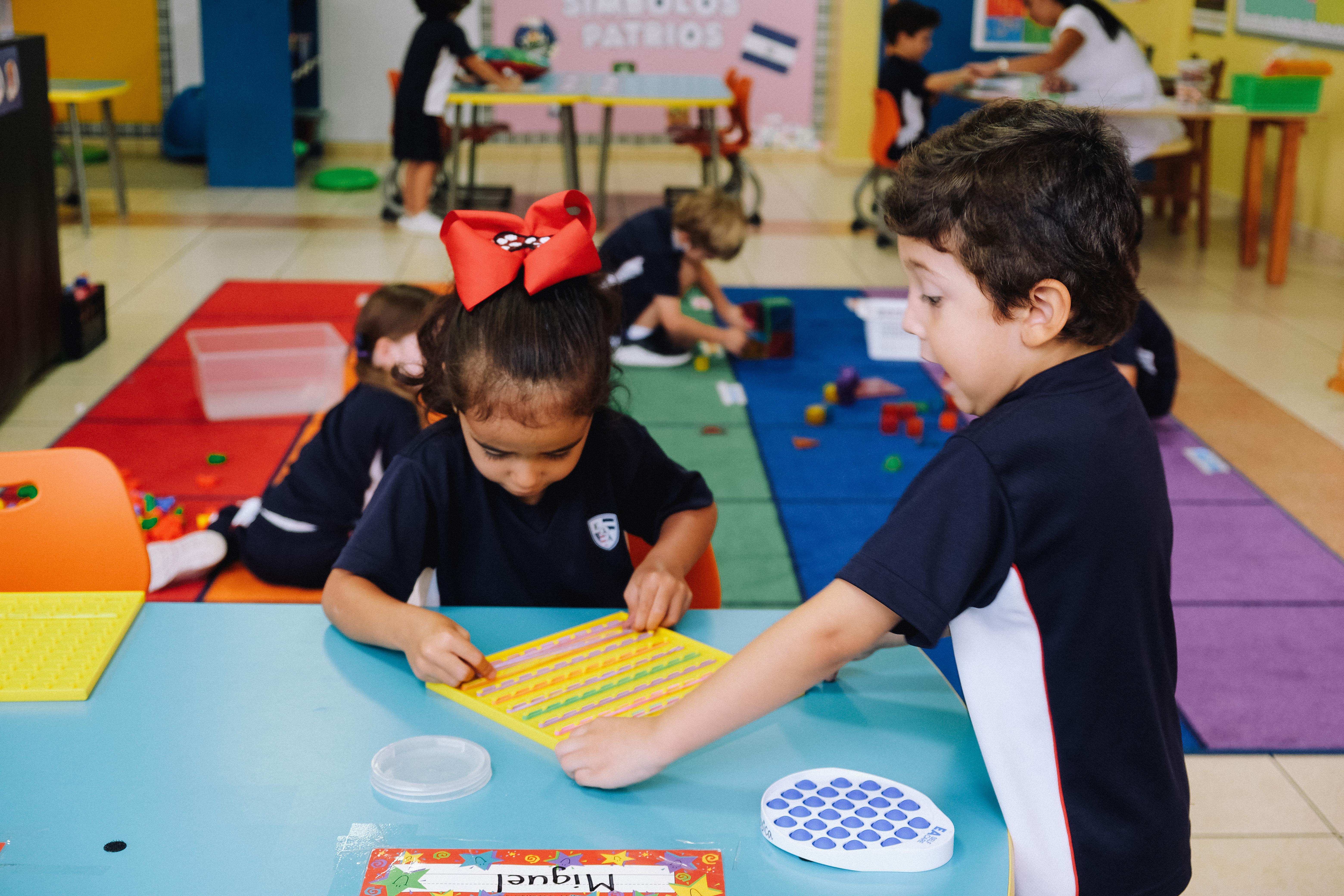

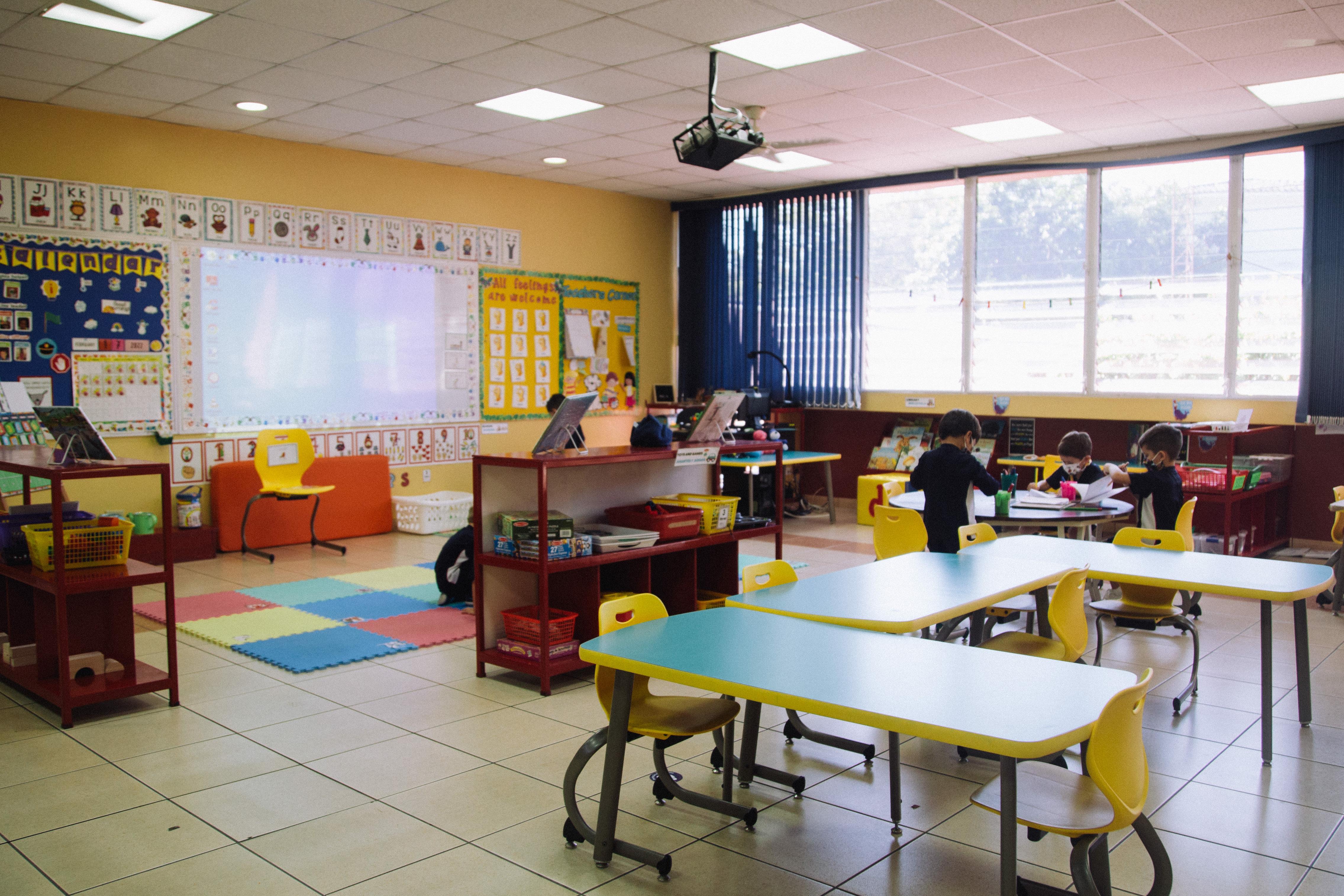

• The materials are placed on low shelves, in containers, and on hooks, so our students can get them independently and put them away.
• Shelves are neat and uncluttered so materials are easy to see, remove and replace.
• Picture and word labels are on containers and shelves so our students know where materials belong and learn to use print.
• Similar materials are grouped together to teach them to sort and classify.
